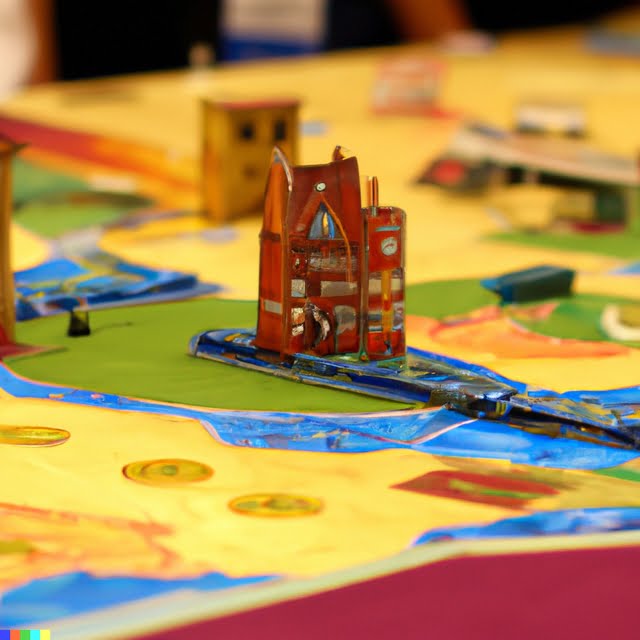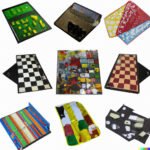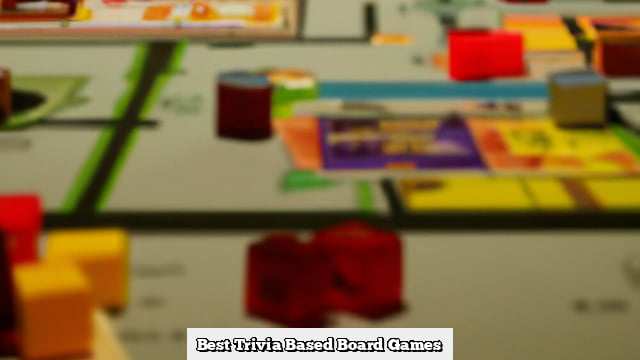Introduction
War based board games have a long and varied history. Evidence suggests the earliest ones date back to ancient Egypt, where they served as a tool for teaching and entertainment. War based board games continued to evolve over time, spreading all over Europe and taking on various forms in different parts of the world. During the medieval period, they were popular among diplomats and generals alike as a way to practice strategy and warfare without having to actually go into battle. In more recent times, during the World War II era, war based board games have become even more popularized with the development of iconic titles like Risk and Axis & Allies. War themed board games are now so prevalent that they span genres from historical-themed titles such as Memoir 44 to fantasy-based ones like Warhammer 40K.
No matter what type or theme of war based board game one intends to make, creating a successful game requires careful consideration of the core components needed for it to work – rules system, play area, components, and player interaction. The rules must be detailed enough both for beginners familiar with the theme but also open enough for veteran players who may want some challenge in terms of complexity. A well-designed play area can enhance both visual aesthetics as well as provide information about potential strategies before any pieces actually move on it ” potentials hazards or objectives could be highlighted at certain key points across its surface to assist players in making decisions. The game components such as dice will determine luck while allowing some degree of choice depending on which dice are used and how many sides there are; pieces should also reflect whatever theme is being used – miniature figures in historically-themed war games for example reinforce their actual military counterparts should bring about an organic look when combined with great visuals from the playing field setup. Finally, player interaction often comes down to choosing one’s own individual strategies – accounting for success through outsmarting enemies by exploiting weaknesses instead of relying too heavily on luck or random chance elements within the game itself – this is perhaps the most important part in ensuring replayability since experienced players may still find new ways of besting each other while newcomers will be challenged regardless if well designed these mechanics are implemented properly
Types of War Based Board Games (Strategy, Tactical, Simulation, etc.)
Strategy War Based Board Games are based on the strategic decisions that you make in the game. These games usually have a large map to represent territories, and involve making a series of choices about which territory to invade and how to defend them.
Tactical War Based Board Games focus more on detailed combat scenarios involving specific troops, terrain, and positioning. Players must use their tactical skills to maneuver their forces around the game board in order to gain strategic advantages over their opponents. Victory is often decided through skillful deployment of resources as well as clever planning strategies.
Simulation War Based Board Games attempt to recreate war-related events as accurately as possible by providing a realistic representation of various aspects of warfare such as terrain, weapon types, supplies needed for victory, weather conditions and more. The goal is to create an immersive experience in which players make decisions that could actually happen in a real battle situation while competing against opponents who are attempting the same tactic or strategy.
Overview of Game Pieces, Game Mechanics and Strategies
When making a war based board game, it’s important to consider the type of pieces and mechanics that will be included. You may decide to use figurines or cards as the primary game components, but it is also possible to create custom pieces or use a combination of both. Additionally, you must determine how many players can participate in the game and enable each of them to obtain an equal chance at winning. Game mechanics should complement the story behind your game, while also giving players a chance to strategize and outsmart their opponents in order to win.
The main components used for war based board games include small-scale military figures, miniature tanks and aircraft, cards such as dice for determining combat resolution and mechanic pieces representing armies, naval vessels or infantry units. Players usually receive different types of forces in order to play against each other, allowing them to make strategic decisions on which resources are best suited for combating their opponents. The outcome of these battles may come down to luck depending on the type of dices rolled and outcome of the confrontation.
Strategies are important when playing war based board games; players must plan how they will use their resources most effectively in battle amongst their opponents. They could opt for attacking with overwhelming numbers or mitigating risk by deploying troops defensively instead of offensively. It is also important to pay attention to terrain factors as they can give one player an advantage over another if they know how to take full advantage of strategic positions or natural obstacles like rivers or forests. Additionally, a variety of tactics such as ambushes and encirclements could be employed in order to gain tactical superiority over one’s enemies.
Building an Interesting and Engaging Story
Creating an interesting and engaging story for a war-based board game is an essential part of the development process. By taking the time to develop a compelling narrative, players will have a meaningful experience as they play the game. As such, it is important to consider what makes a good story; this will depend on which war-based board game you wish to create. Firstly, establish why and how the conflict begins; this could be due to disputed land, resources or ideologies. It’s important to provide insight into who holds power or authority within each faction, such as political leaders, military commanders and officers. Secondly, think about how players can interact within the game; questions like how will they acquire weapons or resources in order to fight? Additionally, what kind of challenges do they face? Thinking of story elements that relate these dynamics can make your game more enjoyable for players by crafting a unique experience regardless of what side wins in the end. Finally, positioning characters with distinct personalities can also help shape your narrative and provide more tension when factions clash with one another in battle. This can push players towards specific objectives that are more thrilling yet hard to achieve emphasizing strategy and collaboration over brute force in order to gain control over territories.
Understanding and Setting Movement Restrictions
When making a war based board game, it is important to understand and set movement restrictions. This refers to the fact that each unit or piece in the game must act within certain parameters of movement. How many spaces you allow each unit to move–whether they are able to move in all directions, or if they need specific directions–must be determined before beginning play. Additionally, the amount of units you allowed on the board and how much space they take up can change your game drastically. Make sure to specify whether diagonal moves are allowed, what order these pieces move in, and other such details. Setting these rules ahead will ensure a much smoother experience for everyone involved.
Addressing Characteristics of Opposing Forces
When making a war-based board game, it is important to consider the characteristics of the opposing forces. This includes features such as units, strategy, position, and resources. Units refers to the types of troops or equipment each player is assigned, such as infantry, cavalry, artillery, naval forces, planes and tanks. Strategy refers to how players choose to move their units based on their own resources and the moves made by their opponents. Position refers to a player’s physical placements within the game board; like in chess where pawns are effectively used in front lines while stronger pieces are held back for strategic use. Resources refer to various factors in the game that help a player win such as terrain layout and production values. Paying attention to these details will make playing your war-based board game more enjoyable and challenging!
Utilizing the Benefits of a Board Map
Making a war-themed board game requires creating an interesting narrative. Begin by deciding on a setting and characters, such as a battle in a medieval fantasy world or a fight between nations during WW2. Include descriptions to help players understand the scope of the game before they begin playing.
The map will be the basis for how the game is played, so make sure your design aligns with your chosen theme. Develop different scenes and areas within your map, each with its own objective, making sure that players have to move through various locations to win the game. Include various terrains for variety and challenge, such as seas, forests and mountains. You can also incorporate different rules depending on what type of terrain players are on when they battle.
Functions like dice rolls and other abilities should be available depending on which characters or pieces each player chooses while they move around the board. Have unique items attached to certain locations across the board ” these will give players advantages as they play through. Make up rules around obtaining these items and having access to their advantages; that way, it makes sense narratively with regards to collecting them in order to make progress in the game.
Finally, add some tension by creating dangers that appear randomly throughout whatever battles players enter into within your maps – make sure it’s balanced between difficulty and fun so that not all games end up being too hard!
Establishing Rules for Dice Rolls and Movement
When making a war based board game, it is important to establish clear rules and guidelines when it comes to dice rolls and movement. First, decide which type of dice will be used”whether its 6-sided, 12-sided or something else. Once the type of die has been selected, create the rules for movement such as how many spaces can be moved in one turn, how far different pieces can move and if certain pieces are allowed an additional roll or bonus turn at any point in a game. Then determine the results of certain rolls; for example, high rolls could denote successful attacks while lower rolls may result in missed attempts or counterattacks. Finally, set prerequisites or exemptions as to what constitutes success or failure when a roll is made “whether it’s hitting a target (such as a specific number on the die) or getting out of sticky situation (rolls that are too low). Establishing specific objectives before each turn will help prevent confusion and give the players direction. It is also important to realize that some strategies such as flanking may require extra rulings therefore ensuring advanced tactics remain viable throughout gameplay.
Crafting Rules for Moving to and Claiming Territories
When creating a war based board game, the main objective is typically to secure as many territories as possible. To do this, players must develop rules for moving their pieces around the game board and claiming new territories. The exact method for doing so will vary depending on the specific goal of the game and how large the playing area is. Generally speaking, however, pieces can often be moved in any direction with limited distances per turn, allowing them to access and claim new locations on their journey.
This process can also require that players either pay some sort of cost (such as coins or points) for traversing certain areas or entering new sections of the map. This makes it more strategic and prevents players from simply hopping from one end of the board to the other without consequence. Another option is to let each player choose a home territory at the beginning of a match and give them more freedom while they are still within their own domain!
Finally, when setting up your war based board game, be sure to establish clear guidelines surrounding when battles occur between individual players and how those fights are resolved. Typically, defending pieces will begin with higher values than attacking ones, but these stats can adjust depending on dice rolls or other random elements that may come into play throughout the game. Be creative with your approach to help make every battle unique!
Evaluating Probability and Outcomes
When making a war based board game, it is essential to evaluate the probabilities and outcomes of various moves. This requires ascertaining which of the game pieces have the highest odds of success, as well as recognizing how specific moves can affect the game’s overall outcome. For example, if certain game pieces have an increased chance of advancement, then their advantage should be represented in some way”such as by granting them additional spaces to move or the ability to launch longer-ranged attacks”so players understand the significance of each move and adjust their strategy accordingly.
It is also important to consider other strategies that can give players a greater chance at winning. For instance, allowing a player to exchange units with another player or relinquish control over specific battlefields can shake up a game and create unpredictable scenarios. Adding elements such as technology upgrades or special “wildcards” that grant advantages during gameplay can also increase strategic complexity and provide balance between competing forces while still preserving the core excitement of war combat. Of course, evaluating probability and outcomes isn’t all that goes into creating a successful war-based board game”attention must also be paid to production art and design, playability factors
Adding Variety, Excitement, and Replayability
When creating a war based board game, it is important to make the theme engaging and exciting for the player. To achieve this, having interesting plot points, characters, and objectives is a must. With the plot of war at its center, adding variation to objectives and strategies can excite players throughout multiple playthroughs. This means potentially including unexpected plot twist or possibilities within the game. Make sure to also include as much player choice when it comes to building their own strategy as possible; designing mechanics which allow different approaches from different players is one way to accomplish this. Additionally, offering player rewards for successful outcomes can add replay value for gamers that enjoy chasing achievements. Finally, giving players the tools they need to create their own stories through play and design will help ensure satisfaction with each game session no matter how many times they’ve played before. By incorporating all these elements into your war-based board game design you’re guaranteed an experience that will keep your players coming back for more!
Final Considerations for Creating a War Based Board Game
Before launching your war based board game on the market, there are some important considerations to take into account that can make all the difference between success and failure. Firstly, consider the age range of players you want to target with your game – this will determine the skill level needed, as well as influencing the complexity of rules and pieces used. In addition to age appropriateness, ensure that the board design is intuitive and user-friendly by testing out various concepts with other people. Furthermore, your rules should be comprehensive but simple to understand – too much complexity will be off-putting for potential players. Finally, create vivid artwork and visualizations of battles, armies and entities so as to give everyone a clear idea about where they stand in the game. A good understanding of battlefield tactics or strategy will also help when constructing your board game’s scenarios. Before committing to a design, do some research into successful war based board games in order to gain an insight into what makes them tick.
Conclusion
Creating war based board games gives players a unique way to experience warfare through the game-play. It can be a great way for gamers to relive memorable battles or create stories of their own. To take the gaming experience even further, some games incorporate real-world events into their board play, making it more realistic and educational at the same time. Whether you are designing your own war based board game or putting together pieces from other successful titles, there are many ways to make it exciting and enjoyable. With some creativity and dedication, you can create an immersive game that will engage your friends and family for hours on end. By taking advantage of various physical components such as dice, game board pieces, cards, character tokens and mission objectives, you can bring your game to life. Finally by utilizing rules which foster strategizing and conflict solving among players makes each gaming experience unique and unpredictable perfectly capping off what could make playing war based board games a fun and exciting experience for all those involved!

I love playing all kinds of games – from classics like Monopoly to modern favourites like Ticket to Ride.
I created this blog as a way to share my love of board games with others, and provide information on the latest releases and news in the industry.





